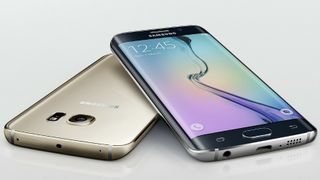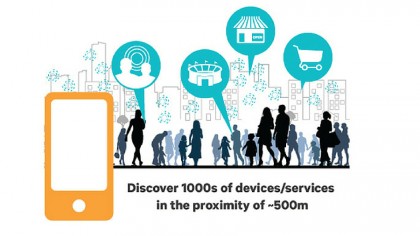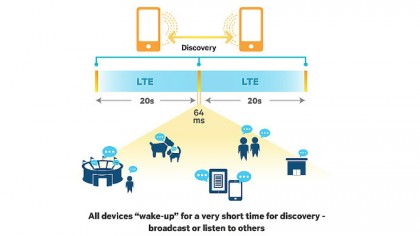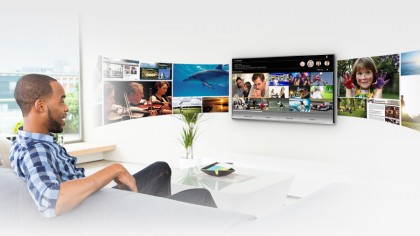How Do I Add A Device To Find My Iphone
Could device-to-device be the next big thing?

Mobile phone networks are getting faster, with 4G now maturing and 5G on its way, but there's a lot more going on than merely increased data transfer speeds. 4K video is about to cause bottlenecks on networks, but the answer could be an odd one; offload it completely and let phones do the donkey work. Cue device to device communications (D2D), which promises to change not only how we communicate with each other, but how the connected car communicates, too.
What is device-to-device (D2D) communications?
It already exists, and has done for years. "D2D is a communication between two devices in proximity," says Malik Saadi, VP and GM, Strategic Technology, ABI Research in London. "Bluetooth pairing is D2D, for sharing data or images, but more recently you have Wi-Fi Direct, and Intel's WiDi wireless display technology."
Devices already using one or more of these D2D wireless technologies include smart TVs and laptops, while Bluetooth Smart is making a play for connecting devices in the smart home, with smartwatches and wearables, and with beacons.
Now it's time for something better, with hugely bigger data transfer rates and a far longer range.

What is LTE Direct?
Think supercharged Bluetooth on a chip that smartphone manufacturers will soon start fitting in devices. Created by Qualcomm in 2012 and expected to become part of its Snapdragon processor for phones, LTE Direct allows a phone to communicate – and send data – to other phones within a staggering 500m. No network required … well, almost.
"It creates a proximal communication paradigm away from the local area network – the devices initiate the communication at the network level, but the traffic is at the device level," says Saadi. This is potentially powerful stuff, with LTE Direct-compatible handsets capable of downloading at a speed of 362.4Mb/s.
However, some doubt its potential. "I suspect that 500m is a stretch, with more likely distances to be about 200-300m," says Dr Kevin Curran, Technical Expert at the IEEE, who thinks that WiGig – which can reach speeds up to 7Gbp/s – is more useful if, say, you want to stream 4K video. "Qualcomm's Snapdragon mobile processor can already support WiGig," he notes.

LTE Direct is being talked-up as an 'always-on' discovery technology, which enables the continuous discovery of thousands of devices while maintaining both anonymity and battery efficiency. "You could share files and images with a community around you," says Saadi. "For instance, if you are touring London and you want to share your video to a group of people."
"Now we have location services where you need to opt-in and be concerned about battery life, but those limitations are removed with LTE Direct because it doesn't really use any overheads, and it doesn't allow location-tracking, so privacy is enhanced," says Steffen Sorrell, Senior Analyst, Juniper Research. "'The discovery aspect helps you find your friends in the vicinity very easily."

Off-grid apps
Mind you, LTE Direct is not the first technology to allow direct device-to-device communication. "The popular FireChat app allows devices to send messages to one another even without a Wi-Fi or cell connection," says Curran. FireChat uses Bluetooth to connect to nearby phones that also have the app installed, thus creating a distributed, decentralised network.
"It first gained popularity when over 500,000 people downloaded the app during the Hong Kong demonstrations a few years ago," he says, adding that it's often used by people fearing that the government will switch off cell or Wi-Fi access – such as in war-torn Iraq, or when Facebook blocked a page promoting a protest in Russia.
However, LTE Direct's promise of 'proximity social media' most resembles FireChat's use during the last SXSW event in Austin, Texas. "The idea was to promote event details, DJ sightings and live discussions of what to do and where to go," says Curran. "FireChat even created 'chat-tags' to create or join a live discussion based on topics."
Current page: Introduction and LTE Direct
Next Page Security and connected cars

Jamie is a freelance tech, travel and space journalist based in the UK. He's been writing regularly for Techradar since it was launched in 2008 and also writes regularly for Forbes, The Telegraph, the South China Morning Post, Sky & Telescope and the Sky At Night magazine as well as other Future titles T3, Digital Camera World, All About Space and Space.com. He also edits two of his own websites, TravGear.com and WhenIsTheNextEclipse.com that reflect his obsession with travel gear and solar eclipse travel. He is the author ofA Stargazing Program For Beginners (Springer, 2015),
How Do I Add A Device To Find My Iphone
Source: https://www.techradar.com/in/news/world-of-tech/could-device-to-device-be-the-next-big-thing-1302974
Posted by: hawkinsthatted.blogspot.com

0 Response to "How Do I Add A Device To Find My Iphone"
Post a Comment